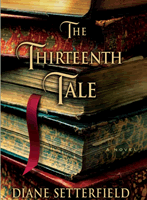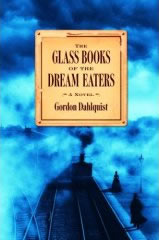Book Review Catch-Up – Spring 2008
Boy, am I behind on recording what I’ve read. I’ve had this post in progress forever trying to summarize some of these books, and I kept tacking new titles onto the end. I finally stole enough free time to get it finished.
The Geographer’s Library
by Jon Fasman
A literary history suspense novel, along the lines of The Davinci Code. it follows two separate threads – one of a rather lazy young reporter at a sleepy small-town paper investigating the death of a college professor from his alma mater, and the other thread the fate of a collection of various alchemical objects put together by a court librarian/philosopher in 10th century Sicily. It takes a rather long time for the two threads to come together, and when they finally did, I was too impatient to care much about what happened.
Locked Rooms (Mary Russell Novels)
by Laurie R. King
I’d forgotten how much I like this series of mystery novels until I picked up the latest. King’s Mary Russell series is a continuation of/homage to Sherlock Holmes, but unlike some I’ve read, this series is well done. Holmes purists tend to sniff at them — but if you think about that for a minute, the idea of there even being Holmes purists to begin with is rather silly. Conan Doyle wasn’t exactly a literary lion, and King’s novels have some weight to them in terms of character voice and plot. The series is based on a Sherlock Holmes that has “retired” from London investigations and fallen in love with the titular Mary Russell, a brilliant young woman half his age but completely his equal.
This particular novel is set in San Francisco, where Holmes and Russell have traveled to wrap up her family’s estate and to stumble into what really happened when her parents met their deaths in a long-ago automobile accident. It’s a nice picture of early San Francisco history during and post the great fire. The mystery comes together decently at the end, but I enjoyed the ride so much I wasn’t all that hung up on whether it did or not.
The Art of Detection
by Laurie R. King
The fifth book in King’s Kate Martinelli series. I haven’t read the first four (somehow I got a bit mixed up when I was buying this) but it didn’t impede my enjoyment of this book. Martinelli’s a San Franciso cop and lesbian mom with a toddler who gets a strange case indeed. A man who enjoys dressing up like victorian detective Sherlock Holmes is killed in an unusual fashion, over what turns out to be an original, lost story of Sherlock Holmes, set in San Francisco. (Yep, the book had some subtle references to the “Locked Rooms” book I read just before this. Not necessary to read both, but I love neat continuity stuff like this.)
Standard Hero Behavior
by John David Anderson
Standard Hero Behavior is a funny teen fantasy novel written by one of Stephanie’s former co-workers. Mason Quayle is a bard in in the small town of Darlington (formerly Highsmith) whose hero father went off 10 years ago with the rest of the town heroes on a mysterious quest, never to return. Now the town is threatened, and only Mason and his friend/sidekick Cowel can save the day – by locating the lost heroes and brining them home to defend the town.
I really like that Anderson wrapped up the novel completely, but there are some tiny signs of where he could go with a sequel. I’ve mentioned before that leaving fantasy fiction novels wide open at the end is one of my pet peeves, this is one satisfying example where that doesn’t happen.
I have to say there was a character in the novel I have concerns about because the character could be interpreted a couple different ways, and I could see where some folks I know might take offense. That’s a question I’ll have to ask Dave next time I run into him, though, about what he was trying to convey.
The Best of MAKE (Make)
by Mark Frauenfelder and Gareth Branwyn
I read this entire book when we were stuck on the plane for six hours on the way to SXSW. Some of the electronics stuff is way over my head, but with some specific instructions and possibly some help from Steph’s dad, those projects aren’t beyond my reach.
Buffy the Vampire Slayer Season Eight, Volume 1: The Long Way Home
by Joss Whedon, Andy Owens, Georges Jeanty, and Jo Chen
The first volume of the comic book version of Season 8 of the show – it doesn’t go back and recap for new people, so you’ll want to start reading the Omnibus comics from the beginning or pick up the DVDs. Volume 1 is great – if you’re a Buffy fan, you’ll definitely want to own this.
Marvel 1602
by Neil Gaiman and Andy Kubert
Neil Gaiman writes a graphic novel where Marvel’s classic characters (X-Men, Fantastic Four, Peter Parker, Nick Fury, Daredevil) come to life in Elizabethan Age. Nicely done!




